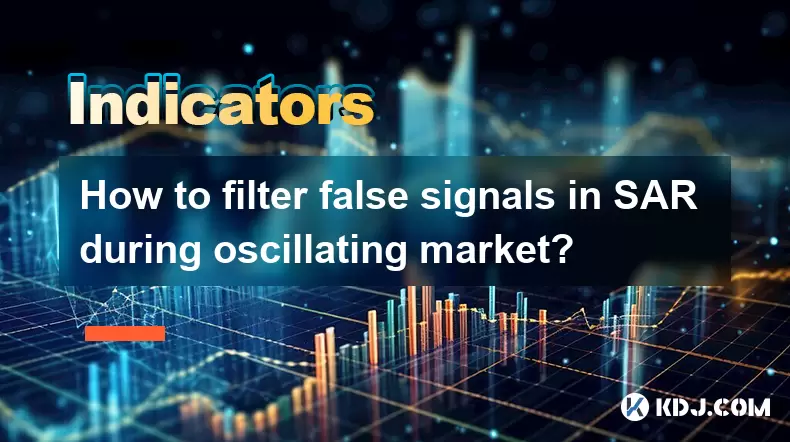-
 Bitcoin
Bitcoin $118000
-0.23% -
 Ethereum
Ethereum $3651
1.66% -
 XRP
XRP $3.423
-1.58% -
 Tether USDt
Tether USDt $1.001
-0.02% -
 BNB
BNB $742.8
0.69% -
 Solana
Solana $177.8
0.30% -
 USDC
USDC $0.9999
0.01% -
 Dogecoin
Dogecoin $0.2539
0.03% -
 TRON
TRON $0.3199
-1.74% -
 Cardano
Cardano $0.8382
0.59% -
 Hyperliquid
Hyperliquid $44.83
0.05% -
 Stellar
Stellar $0.4602
-1.49% -
 Sui
Sui $3.850
0.58% -
 Chainlink
Chainlink $18.62
2.56% -
 Hedera
Hedera $0.2681
0.97% -
 Avalanche
Avalanche $24.63
3.07% -
 Bitcoin Cash
Bitcoin Cash $522.5
0.96% -
 Shiba Inu
Shiba Inu $0.00001507
-0.80% -
 Litecoin
Litecoin $113.6
9.75% -
 UNUS SED LEO
UNUS SED LEO $8.994
0.24% -
 Toncoin
Toncoin $3.197
-0.43% -
 Polkadot
Polkadot $4.361
1.13% -
 Uniswap
Uniswap $10.45
1.41% -
 Monero
Monero $327.5
0.65% -
 Ethena USDe
Ethena USDe $1.001
-0.03% -
 Bitget Token
Bitget Token $4.992
-1.12% -
 Pepe
Pepe $0.00001355
0.67% -
 Dai
Dai $1.000
0.01% -
 Aave
Aave $322.6
0.15% -
 Bittensor
Bittensor $415.5
0.88%
How to filter false signals in SAR during oscillating market?
In oscillating markets, the SAR indicator can produce false signals; use moving averages, RSI, and Bollinger Bands to filter them and improve trading accuracy.
May 22, 2025 at 03:57 am

In the world of cryptocurrency trading, the Parabolic Stop and Reverse (SAR) indicator is a popular tool used by traders to determine potential entry and exit points in the market. However, during oscillating market conditions, the SAR can produce a high number of false signals, which can lead to confusion and potential losses. In this article, we will explore various strategies and techniques to effectively filter out these false signals and improve the accuracy of your trading decisions.
Understanding the SAR Indicator
Before we delve into filtering false signals, it's important to have a solid understanding of the SAR indicator. The Parabolic SAR is a technical analysis tool that provides potential reversal points in the price movement of an asset. It appears as a series of dots above or below the price chart, depending on the direction of the trend. When the dots are below the price, it suggests an uptrend, and when they are above, it indicates a downtrend. The SAR indicator is particularly useful for identifying potential stop-loss levels and determining when to enter or exit a trade.
Identifying Oscillating Market Conditions
To effectively filter false signals, it's crucial to identify when the market is in an oscillating state. An oscillating market is characterized by frequent price swings within a relatively narrow range, with no clear directional trend. This can be identified by observing the price chart and looking for patterns such as:
- Sideways movement: Prices move within a horizontal channel, with no clear upward or downward trend.
- Choppy price action: Frequent price reversals and short-term fluctuations.
- Lack of momentum: The absence of strong bullish or bearish momentum, with prices often retracing quickly.
By recognizing these characteristics, traders can anticipate potential false signals from the SAR indicator during oscillating market conditions.
Combining SAR with Other Indicators
One effective way to filter false signals is to combine the SAR indicator with other technical analysis tools. By using multiple indicators, traders can gain a more comprehensive view of the market and make more informed decisions. Some popular indicators to use in conjunction with SAR include:
- Moving Averages: By comparing the SAR signals with the direction of moving averages (such as the 50-day or 200-day), traders can confirm the overall trend and filter out false signals that contradict the moving average direction.
- Relative Strength Index (RSI): The RSI can help identify overbought or oversold conditions. By waiting for the RSI to confirm the SAR signal, traders can avoid entering trades during extreme market conditions that are more likely to produce false signals.
- Bollinger Bands: These bands can help identify periods of high volatility. By waiting for the price to break out of the Bollinger Bands in the direction of the SAR signal, traders can increase the probability of a valid trade entry.
Implementing a Confirmation Strategy
To further reduce the impact of false signals, traders can implement a confirmation strategy. This involves waiting for additional price action or indicator signals to confirm the initial SAR signal before entering a trade. Here are some steps to implement a confirmation strategy:
- Wait for a candle close: After the SAR indicator generates a signal, wait for the current candle to close in the direction of the signal. This helps filter out short-term price fluctuations that may lead to false signals.
- Look for price action confirmation: Observe the price action following the SAR signal. Look for patterns such as bullish or bearish engulfing candles, doji formations, or other reversal patterns that confirm the direction of the SAR signal.
- Use multiple timeframes: Analyze the SAR signal on different timeframes (e.g., 1-hour, 4-hour, and daily charts). If the signal is consistent across multiple timeframes, it increases the probability of a valid trade entry.
Adjusting SAR Parameters
Another approach to filtering false signals is to adjust the parameters of the SAR indicator itself. By fine-tuning the settings, traders can adapt the indicator to better suit the current market conditions. The two main parameters to consider are:
- Acceleration Factor (AF): This controls the rate at which the SAR dots move closer to the price. A lower AF value will result in slower-moving dots, which can help filter out false signals in an oscillating market.
- Maximum Acceleration (MA): This sets the maximum value the AF can reach. By reducing the MA, traders can prevent the SAR dots from moving too close to the price during periods of high volatility, reducing the likelihood of false signals.
To adjust the SAR parameters:
- Access your trading platform: Open your preferred trading platform that supports the SAR indicator.
- Locate the SAR settings: Find the settings or properties menu for the SAR indicator.
- Adjust the AF and MA values: Experiment with different values for the AF and MA, starting with lower values to reduce sensitivity in an oscillating market.
- Monitor the results: Observe how the adjusted SAR indicator performs in real-time and make further adjustments as needed.
Using Volatility Filters
Volatility filters can be an effective tool for filtering false signals in an oscillating market. By measuring the market's volatility, traders can determine when conditions are too choppy for reliable SAR signals. Here are two common volatility filters to consider:
- Average True Range (ATR): The ATR measures the average range of price movement over a specified period. By setting a threshold for the ATR, traders can avoid taking SAR signals when volatility is above the threshold, as these are more likely to be false signals.
- Bollinger Band Width: The width of the Bollinger Bands can be used as a volatility indicator. When the bands are narrow, it suggests low volatility and potentially more reliable SAR signals. Conversely, when the bands are wide, it indicates high volatility and a higher likelihood of false signals.
To implement a volatility filter:
- Calculate the volatility metric: Use your trading platform or a technical analysis tool to calculate the ATR or Bollinger Band Width.
- Set a threshold: Determine an appropriate threshold for the volatility metric based on historical data and current market conditions.
- Filter SAR signals: Only take SAR signals when the volatility metric is below the set threshold, increasing the probability of valid trade entries.
Frequently Asked Questions
Q1: Can the SAR indicator be used effectively in all market conditions?
A1: While the SAR indicator can be useful in trending markets, its effectiveness diminishes in oscillating or choppy market conditions. In such situations, traders should consider using additional filters and confirmation strategies to improve the accuracy of SAR signals.
Q2: How often should I adjust the SAR parameters?
A2: The frequency of adjusting SAR parameters depends on the market conditions and your trading strategy. In highly volatile or oscillating markets, you may need to adjust the parameters more frequently to adapt to changing conditions. However, it's important not to over-optimize, as this can lead to curve-fitting and poor performance in live trading.
Q3: Are there any alternative indicators to the SAR that perform better in oscillating markets?
A3: Yes, there are several alternative indicators that may perform better in oscillating markets. Some popular options include the Keltner Channel, Donchian Channel, and the Ichimoku Cloud. These indicators can help identify potential breakout points and trend reversals in choppy market conditions.
Q4: Can I use the SAR indicator for long-term investing in cryptocurrencies?
A4: The SAR indicator is primarily designed for short-term trading and may not be suitable for long-term investing in cryptocurrencies. For long-term investing, it's generally more effective to focus on fundamental analysis, market trends, and long-term price patterns rather than relying on short-term technical indicators like the SAR.
Disclaimer:info@kdj.com
The information provided is not trading advice. kdj.com does not assume any responsibility for any investments made based on the information provided in this article. Cryptocurrencies are highly volatile and it is highly recommended that you invest with caution after thorough research!
If you believe that the content used on this website infringes your copyright, please contact us immediately (info@kdj.com) and we will delete it promptly.
- Crypto Coins, Undervalued Gems & Bull Run Potential: What You Need to Know, New Yorker Style
- 2025-07-20 20:30:12
- Nexchain, Cardano, Litecoin: What's Hot and What's Not in Crypto
- 2025-07-20 20:30:12
- Bitcoin Price Today: Recovery Hopes Amidst Fluctuations?
- 2025-07-20 20:50:12
- CoinDCX Hacked? Investor Safety in the Crypto Crosshairs
- 2025-07-20 20:50:12
- Blockchain Expansion: Global Moves and Market Dynamics in Web3
- 2025-07-20 20:55:13
- Ethereum's Overtaking: A New Era for Crypto?
- 2025-07-20 21:10:13
Related knowledge

Advanced RSI strategies for crypto
Jul 13,2025 at 11:01am
Understanding the Basics of RSI in Cryptocurrency TradingThe Relative Strength Index (RSI) is a momentum oscillator used to measure the speed and chan...

Crypto RSI for day trading
Jul 12,2025 at 11:14am
Understanding RSI in the Context of Cryptocurrency TradingThe Relative Strength Index (RSI) is a momentum oscillator used to measure the speed and cha...

Crypto RSI for scalping
Jul 12,2025 at 11:00pm
Understanding RSI in the Context of Crypto TradingThe Relative Strength Index (RSI) is a momentum oscillator widely used by traders to measure the spe...

What does an RSI of 30 mean in crypto
Jul 15,2025 at 07:07pm
Understanding RSI in Cryptocurrency TradingRelative Strength Index (RSI) is a momentum oscillator widely used in cryptocurrency trading to measure the...

What does an RSI of 70 mean in crypto
Jul 13,2025 at 06:07pm
Understanding the RSI Indicator in Cryptocurrency TradingThe Relative Strength Index (RSI) is a widely used technical analysis tool that helps traders...

Does RSI work in a bear market for crypto
Jul 16,2025 at 01:36pm
Understanding RSI in Cryptocurrency TradingThe Relative Strength Index (RSI) is a momentum oscillator used by traders to measure the speed and change ...

Advanced RSI strategies for crypto
Jul 13,2025 at 11:01am
Understanding the Basics of RSI in Cryptocurrency TradingThe Relative Strength Index (RSI) is a momentum oscillator used to measure the speed and chan...

Crypto RSI for day trading
Jul 12,2025 at 11:14am
Understanding RSI in the Context of Cryptocurrency TradingThe Relative Strength Index (RSI) is a momentum oscillator used to measure the speed and cha...

Crypto RSI for scalping
Jul 12,2025 at 11:00pm
Understanding RSI in the Context of Crypto TradingThe Relative Strength Index (RSI) is a momentum oscillator widely used by traders to measure the spe...

What does an RSI of 30 mean in crypto
Jul 15,2025 at 07:07pm
Understanding RSI in Cryptocurrency TradingRelative Strength Index (RSI) is a momentum oscillator widely used in cryptocurrency trading to measure the...

What does an RSI of 70 mean in crypto
Jul 13,2025 at 06:07pm
Understanding the RSI Indicator in Cryptocurrency TradingThe Relative Strength Index (RSI) is a widely used technical analysis tool that helps traders...

Does RSI work in a bear market for crypto
Jul 16,2025 at 01:36pm
Understanding RSI in Cryptocurrency TradingThe Relative Strength Index (RSI) is a momentum oscillator used by traders to measure the speed and change ...
See all articles

























































































